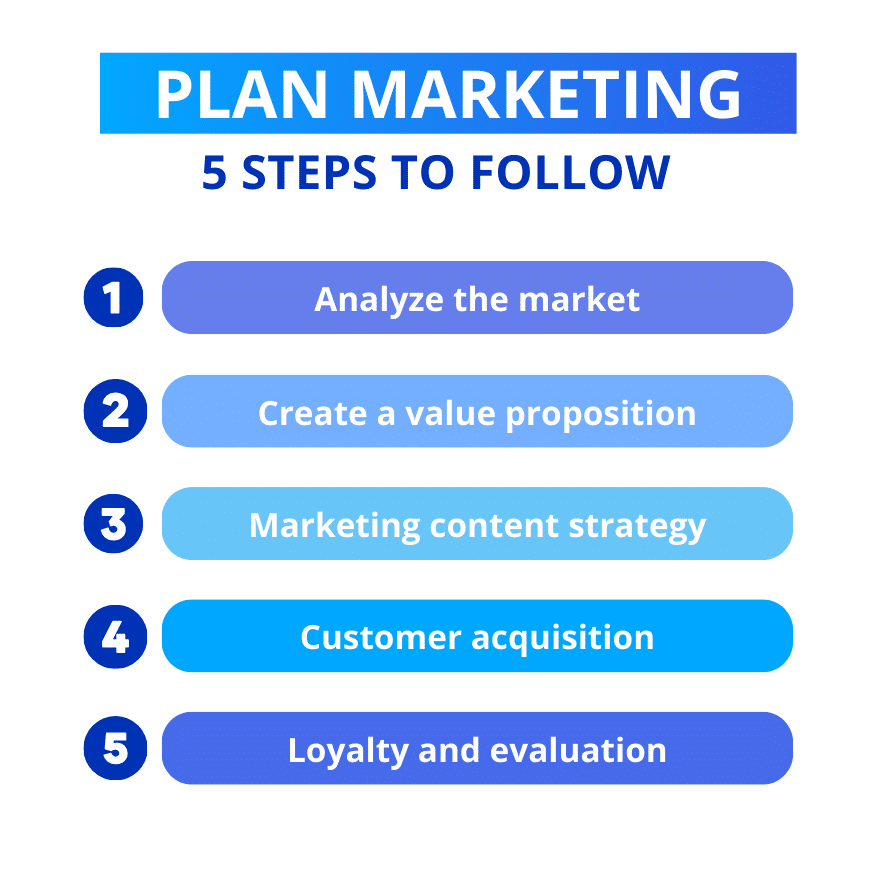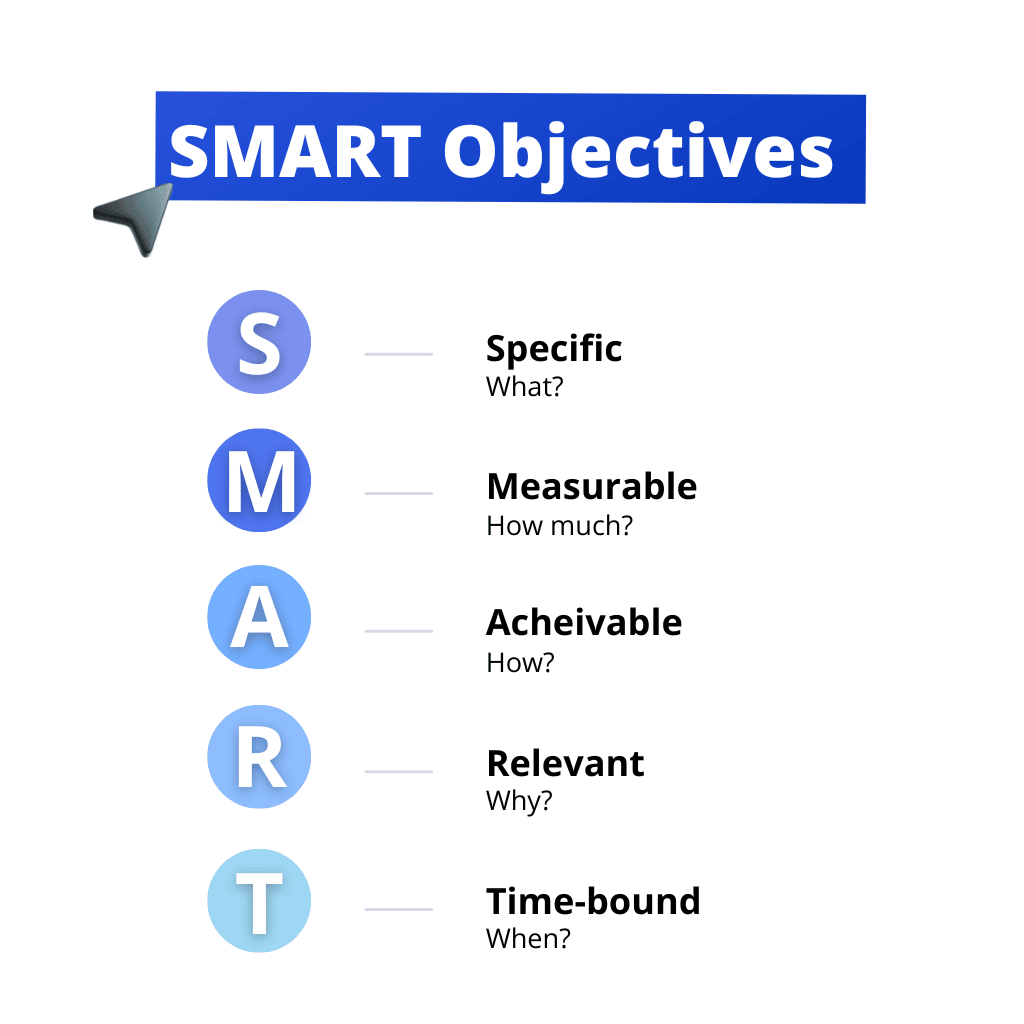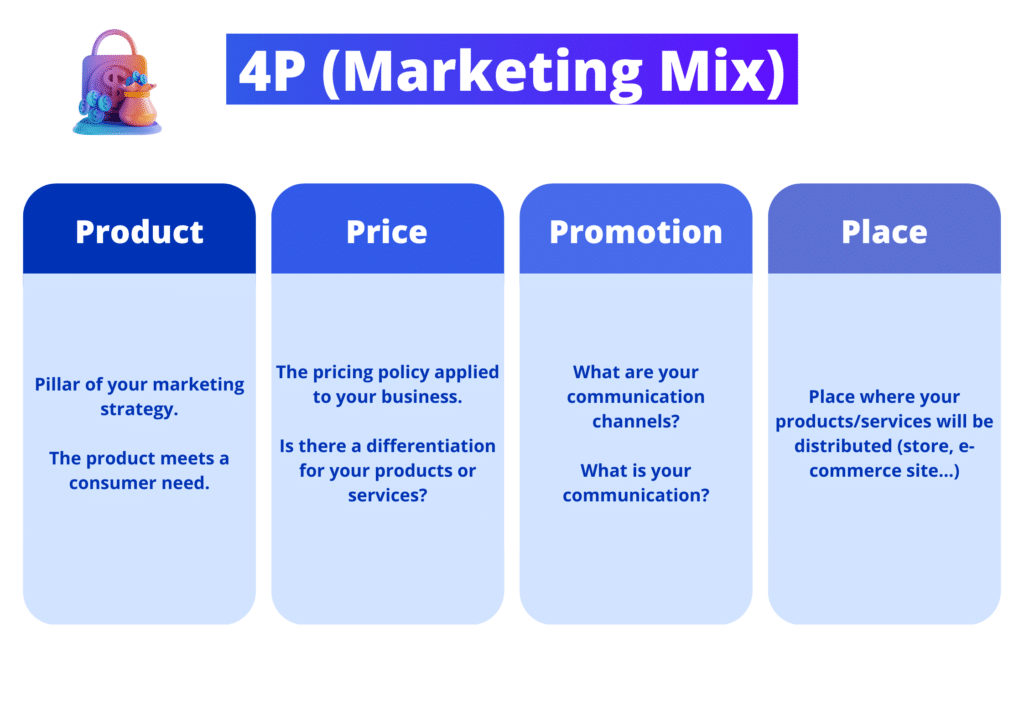How to create a Marketing Plan? It’s the culmination of a company’s strategic analysis. 💥 You can program various actions and objectives.
After an internal and external analysis, we set goals, product range, objectives, and budget. 💰 This is an essential tool for launching a product and monitoring post-marketing objectives.
Let’s find out more! 👋
What is a Marketing Plan? Definition
A marketing plan guides a company’s marketing strategy to achieve the objectives set by the brand. 🎯
By creating a marketing plan, you can develop your brand’s activities. This includes all the analytical and decision-making elements of a company’s marketing team.
Indeed, a marketing plan is a document that guides a company’s marketing strategy to achieve its goals.
It is the actual roadmap used to compile, develop and prioritize operational marketing initiatives planned over a given period. 👉 A company’s marketing plan usually spans a year.
How to create a Marketing Plan? Example
Here’s an example of a marketing plan to boost your B2b SaaS business:
Give an overview of the software as a service (SaaS) industry and its importance in the modern business world. 🌐
- Step 1: Market analysis
- Detailed study of competitors and trends in the SaaS market.
- Identify potential customers‘ unmet needs.
- Step 2: Create a value proposition
- Highlight the unique benefits of SaaS.
- Create a clear and convincing message.
- Step 3: Marketing content strategy
- Create informative blogs, videos, and infographics.
- Share on social networks and optimize for SEO.
- Step 4: Customer acquisition
- Use of paid marketing (advertising, PPC).
- SEO strategies to improve your search engine rankings.
- Step 5: Loyalty and referrals
- Establish high-quality customer service.
- Encourage satisfied customers to recommend SaaS.
In conclusion, a solid marketing plan is essential for growing your business.
💡 This marketing plan is a reference, so customize it to suit your company, your resources, and your specific objectives.

Marketing Plan Template
What does a marketing plan calendar look like? 🧐 Here’s a template to fill in:
| Task | Status | Responsible | Due date |
| Product analysis | Not started | Arthur C. | XX/XX/XX |
| Market study | In progress | Marie B. | XX/XX/XX |
| Creation of advertising content | Delayed | Pierre R. | XX/XX/XX |
| Quality control | Finished | Arthur C. | XX/XX/XX |
| Analysis of results | In progress | Marie B. | XX/XX/XX |
Most companies have various plans that support each other. 🤝
Your marketing plan defines your target market and the solutions you will offer them, and lists the promotional tactics that will help you achieve your goals. 🗣️
It should also be linked to your strategic plan, which sets out your company’s overall direction for the months and years ahead.
A well-designed marketing plan also boosts the confidence of financial institutions, as it demonstrates that your company has a good chance of succeeding. 😁
How to create a Marketing Plan? 5 Steps
Now we’ll look at each stage of the marketing plan in detail: ⏬
-
1. Market analysis
The first step in your marketing plan is to assess your situation, your environment, and your competitors. Companies first need to know exactly who they are. 🤔
To achieve this, you can rely on the SWOT matrix, an acronym that stands for “Strengths, Weaknesses, Opportunities, Threats”. 💪 Internally, you can use this tool to highlight your company’s strengths and weaknesses.
This means that while you can leverage your qualities and skills to gain a market advantage, you also need to analyze vulnerabilities that need to be addressed. 👀
Externally, the SWOT matrix identifies the company’s opportunities for growth and development, as well as the obstacles it may encounter in the marketplace.
The SWOT analysis is complemented by the PESTLE analysis (Political, Economic, Social, Technological, Environmental, Legislative), enabling external research on these six criteria. 🔍 You can therefore benefit from a complete study to make strategic decisions in harmony with your environment.
You also need to take a close look at your competitors. Companies have to conduct a detailed competitive analysis to identify their product differentiators and corresponding positioning. 📍
Finally, you need to carry out a market research. This is an essential step in assessing market characteristics and project viability. 👌
-
2. Define your objectives
The marketing plan must have concrete communication objectives that the company has to assimilate over a period of time. ✅
These vary according to the industry and the company’s maturity. They must be carefully chosen according to expected growth.
👉 Goals can be related to:
- Sales volume,
- Average basket size,
- Market share held,
- Reputation of the company, product or service,
- Generation of qualified leads,
- Customer loyalty.
Each objective must be linked to a Key Performance Indicator (KPI), so that results can be analyzed.
They must be SMART Goals! ⚡

-
3. Content marketing strategy
Product positioning is a crucial step in offering customers a differentiated product and standing out from your competitors. 🤩
To implement it, a company must successfully unleash its competitive advantage and the reasons for its uniqueness. 💎
The product must meet the expectations of the target or “buyer persona”, both in terms of needs and quality.
To achieve this, companies need to use a content strategy, using the “marketing mix” or 4-P method to determine the right positioning. 🏹
This tool lets you see the marketing levers available for your brand.
👉 You need to decide:
- Product policy, Which service or product will best meet this customer’s needs? Should you modify your current offering to differentiate yourself from the market?
- Pricing policy, How much should I charge? How can you increase your competitive edge by adjusting your prices? Product pricing generally depends on production, marketing, distribution and sales costs, as well as the profit margin you want to achieve.
- Promotional policy, What are the best ways to communicate with your customers and sell your products? When we say “marketing”, most people think of advertising, in-person sales, public relations, social media or email marketing and other promotional tactics.
- Place policy, Is your service or product being sought, bought and used where? Where are customers most likely to find your offerings? Consider both online and physical locations.

-
4. Define your marketing channels
The aim is to select the appropriate communication channels to achieve your objectives and generate qualified leads. 🎯
The company can choose digital tools such as social networks, video, email, websites, and even display advertising.
However, traditional marketing campaign channels such as brochures, posters, events, emailing and media activities should not be ignored. 😬
Brands can also use less traditional communication techniques, such as street marketing or guerrilla marketing. 🔫
To find out more about the different acquisition channels, then read this dedicated article! 👏
-
5. Follow-up and evaluation
Companies need to measure efforts and investments for each marketing plan. 💪 Predefined objectives must therefore be quantifiable, and companies must rely on performance indicators.
Regular monitoring enables you to analyze the successes and failures of campaigns to optimize channels according to its needs.
This final step enables companies to consider where existing initiatives can be improved and implemented in future marketing plans. 🔮
If your company has a CRM, you can use it to measure them. 👀 In this way, you can easily integrate marketing initiatives, define objectives and monitor the ROI of individual initiatives.
[maxbutton id=”64″ url=”https://chrome.google.com/webstore/detail/waalaxy-1-linkedin-automa/hlkiignknimkfafapmgpbnbnmkajgljh” text=”Discover Waalaxy CRM 🪐” ]
Bonus: Drawing up a marketing plan
-
Marketing Budget
Finally, the budget is an important phase in your marketing plan. It helps assess a company’s financial capacity and predict the cost breakdown of actions. 💲
It directly affects the success of your marketing campaign. 🙊
Your budget must consider the maturity of your business or offer. For example, the implementation phase generally requires greater financial outlay. 🤑
Marketing budgets are then adjusted downwards as the product reaches a certain level of maturity.
Here’s a summary table of costs per marketing action, from low to high, with explanations: 👇
| Event | Cost (💶) | Reasons |
| Customer marketing | 💶 | The cost of setting up any loyalty programs. |
| Email campaigns | 💶💶 | Data collection and management, graphic design, development. |
| Analyst relations | 💶💶 | Fees for analyst relations experts. |
| Public relations | 💶💶 | Expenses related to press releases and public events. |
| SEO | 💶💶💶 | Costs associated with ongoing optimization and tools. |
| Website | 💶💶💶 | Design, development, and maintenance expenses. |
| Conversational marketing | 💶💶💶 | Investment in chatbot and automation software. |
| Social networks | 💶💶💶 | Investment in social media management tools / custom influencers. |
| Loyalty program | 💶💶💶 | Loss of profits linked to offers. |
| Events | 💶💶💶💶 | Costs related to venue rental, logistics, and promotion. |
| Video | 💶💶💶💶 | Production, editing and sometimes post-production costs. |
| Content | 💶💶💶💶 | Costs associated with the regular creation of content. |
| E-mails | 💶💶💶💶💶 | Costs associated with automation platforms, lists, and design. |
| Advertising | 💶💶💶💶💶 | Advertising budgets for campaigns. |
| Product marketing | 💶💶💶💶💶💶 | Product development and promotion. |
Conclusion: Marketing Plan Strategy
To recap, a marketing plan is a document that lists the actions and strategies you’re going to put in place to promote your product or service. 🧨
It also describes the objectives to be achieved, the resources required and the deadlines for each action.
The marketing plan helps you organize and coordinate your marketing efforts to reach your target audience and maximize your results. 🚀 In this way, you also ensure customer retention and a better experience for your users.

FAQ: How to create a Marketing Plan?
How do you write a marketing plan?
Creating an effective marketing plan is essential for companies wishing to achieve their business objectives. 🔥
First, you need to define specific, measurable objectives to achieve. Next, analyze your target market and identify consumer trends and needs.
Understand your brand’s positioning by conducting thorough competitive research. 🛍️ Next, determine the right marketing mix strategy for your business, including products, pricing, communications and sales.
Finally, create a detailed schedule and budget for your marketing efforts. Measure and evaluate your results regularly, and adjust your plan if necessary. ✅
Why is marketing plan important?
The marketing plan is an essential action for any company. 👉 By creating an in-depth analysis of the market, target audience and competition, this plan helps to better identify customer needs and implement appropriate practices.
In addition, it helps to allocate resources more efficiently, by determining the necessary budgets and priority actions.
Finally, it enables performance to be analyzed and decisions to be taken to ensure the company’s sustainability. ✨
What’s the difference between marketing plan and communication plan?
Two essential plans for promoting a company are the marketing plan and the communication plan. 📣
- The marketing plan is a global strategy that aims to define the company’s objectives, identify its targets, analyze the competition and implement actions to achieve these goals.
- The communication plan, on the other hand, focuses on the actions and means to be used to disseminate the company’s messages, create a brand image and generate awareness.
In short, the communication plan is an operational approach, while the marketing plan is a strategic one. 🧲 To ensure the company’s success, the two plans are complementary and require close coordination.
Now you know How to create a Marketing Plan, good luck! 🍀









